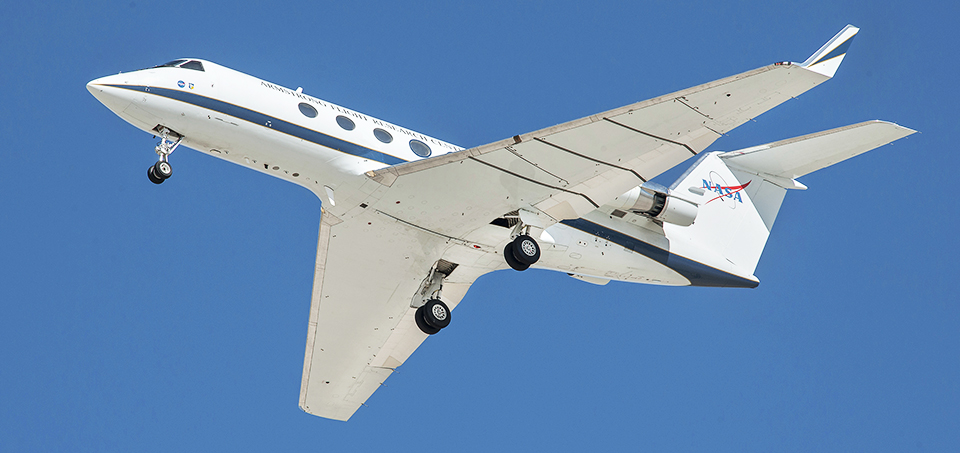NASA Strives to Dramatically Reduce Aircraft Noise
By Matt Kamlet, NASA Armstrong Flight Research Center
July 26, 2018 - The noise produced by airplanes landing or taking off is a topic known all too well by communities that live near airports. Some of that noise may soon be significantly reduced, thanks to NASA technology that recently demonstrated a 70 percent reduction in airframe noise in flight.
Aircraft noise remains one of the top public complaints received by the FAA. While aspects of the aircraft, such as a propulsion system, contribute noise, airframe noise, which includes non-propulsive parts of the aircraft, makes up much of the total aircraft noise. NASA’s goal with the development and flight testing of the technology was to reduce airframe noise by a substantial amount and improve the quality of life for communities near airports.
To conduct the tests, NASA applied the technology to a Gulfstream III research aircraft at the agency’s Armstrong Flight Research Center in California. The technology consisted of three key elements to airframe noise reduction: the landing gear, the landing gear cavities, and the wing flaps.
The landing gear noise reduction technology was developed at NASA’s Langley Research Center in Virginia, following extensive computer simulations that led NASA engineers to what they believe is the ideal design to maximize noise reduction without increasing aerodynamic drag. The gear features fairings that are porous along their front, meaning they consist of many small holes that permit some of the air to flow through the fairing. Meanwhile, some of the airflow is deflected around the gear.
Landing gear cavities also contribute to airframe noise, creating large spaces where the landing gear deploys from the main body of the aircraft and leaving a spot where airflow can get pulled in and create noise. To address this, NASA applied two concepts, one of which includes a series of chevrons placed near the front of the cavity, featuring a sound-absorbing foam at the trailing wall. A net was also stretched across the opening of the main landing gear cavity, which altered the airflow and reduced noise.
To address the wing flap element of airframe noise, NASA turned to an experimental, flexible flap, previously flown as part of the Adaptive Compliant Trailing Edge project, or ACTE, which studied aerodynamic efficiency. Unlike conventional wing flaps that feature gaps between the flap and the main body of the wing, the ACTE flap is a seamless design that eliminates those gaps and reduces the noise created by airflow traveling between the flap and the rest of the wing.
Significant reduction in aircraft noise is necessary for air transportation to maintain growth on its current trend, and NASA is making it possible through the Aeronautics Research Mission Directorate.

